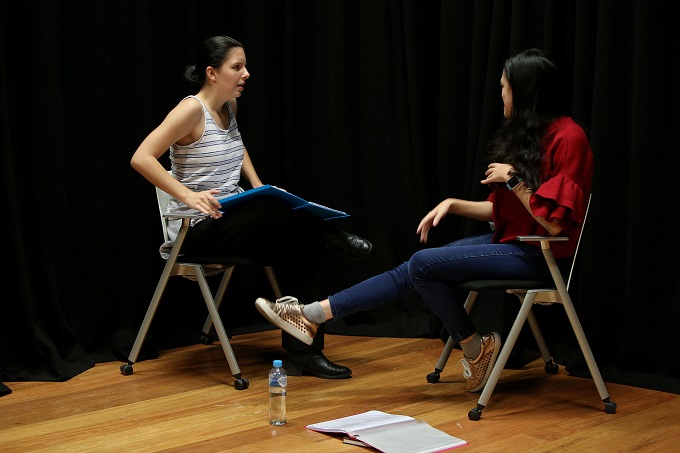The Pros and Cons of Tandem Teaching
Tandem teaching, dual teaching, job sharing, co-teaching – each of these terms describe a situation where two (or more) teachers share responsibility for teaching a single class. School News takes a look at the pros and cons for those considering a shared role...

Between one-in-four and one-in-five Australian teachers work part-time (27% of primary teachers and 19.5% of secondary teachers), according to the Staff in Australia’s Schools 2013 report from the Australian Council for Educational Research.
Not all of these job-share with another teacher, but they represent a significant proportion of Australian teachers.
Job-sharing is different from team teaching, where two full-time teachers are responsible for the equivalent of a double class. The workload ratio of two tandem teachers can vary from 20:80 (one day to four days) to 50:50 (two and a half days each).
The advantages of tandem teaching
Stella, currently a Year 3 teacher in Perth’s northern suburbs has been working in a part-time capacity for the past decade, tandem teaching with others between one day a week to four days a week across a number of schools.
She says there are many advantages to tandem teaching:
– The children get a variety of teaching styles, and it is a good way to break up the week
– Children will usually connect with at least one of the teachers
– There is thorough coverage of the curriculum because there is more accountability to ensure it is covered
– The teaching rigour for one or two days is strong as having days off make you feel more refreshed, therefore there is less ‘fill in time’ activities
– Dividing curriculum areas according to strength means you can become more specialised and knowledgeable
– There is an extra perspective on children’s progress and behaviour, and support with any parent-related issues
– You can swap days and do relief for each other.
Other advantages to job-sharing include flexibility and more time to spend with your own children and family, reduced marking load, more mental and emotional capacity as you can share planning and responsibility with your partner and less burnout.
For primary students exposed to tandem teaching, it gives them an early experience of what high school will be like, where each subject is taken by a different teacher, each with their own personality and teaching style.
The disadvantages of tandem teaching
There’s a common misconception that teaching is an easy job because it includes twelve weeks holiday each year…
For part-time teachers, that fallacy is even more entrenched. Just because teachers are not at work, does not mean they are on holiday. There is a fine balancing act for tandem teachers to ensure that neither teacher – as well as the students – are disadvantaged.
Many of the pros of job-sharing have a flip-side that can be considered a con. Less days at work means a greater disconnect to the school and other staff and more time needed to catch up. More time with your own family can mean slower job advancement and lower income.
Job-sharing does come with some challenges, says Stella, including:
– Communication between teachers or with parents can be tricky if the teachers do not know each other well, or are not on the same page
– Working two days can make it challenging to get through all the curriculum content you require
– Working on days off to complete marking and administration
– Attending meetings and PD on your days off and not getting paid.
“I think working the 3-day/2-day combination is the hardest to find a balance as three days is considered the main responsibility teacher but it’s not enough to keep up with all the facets of the teaching role as it’s only one day extra in reality,” says Stella.
“I’m sure it does work if you are in a position to know your partner well and work together for many years – you would iron out a lot of the small issues in that time.”
The solution, she says, is obvious: communication.
“Meet before the school year begins and try to get on the same page with expectations of work standards, student behaviour and parent communication. Define each teacher’s role and responsibilities.
“Developing trust is important too – knowing that your teaching partner will be accountable. Good communication is key.”
Case Study: Learning Diversity dual teaching program at Methodist Ladies College, Victoria
At MLC, team teaching takes a slightly different form thanks to their new Learning Diversity approach.
Louise Peyton, Head of Junior School and Beth Gerondis, Director of Learning Support have created an evidence-based, proactive support program that pairs a Learning Diversity teacher with specialist qualifications with every classroom teacher. Unlike true tandem teaching where two teachers share a single contract, this is additional part-time support for a full-time teacher.
“This collaborative approach enables early intervention, so students are provided with more opportunities to meet expected learning outcomes,” say Peyton and Gerondis.
“It creates a highly differentiated approach in the classroom, enables small group intervention in the class, and provides more intensive support, meaning each child’s learning needs are being addressed.”

Importantly, it is not just students with learning challenges who benefit from the dual-teaching program, but also students who have been identified as gifted and talented:
“With more than one teacher working across a range of students in different ways, we are offering students a more constructive and collaborative environment to meet their learning needs in one classroom, benefitting both students and teachers.”
The advantage for the classroom teachers are clear – they are better supported, develop a deeper awareness of the learning style of each student and can better adjust the content and expectations for individual students. The barriers are also clear, not only does it have the normal challenges of team teaching, but the added expense to the school.
Ultimately, when the individuals are well matched, the pros of tandem teaching can outweigh the challenges, providing advantages not only to the individual teachers but to the school admin and students as well.







